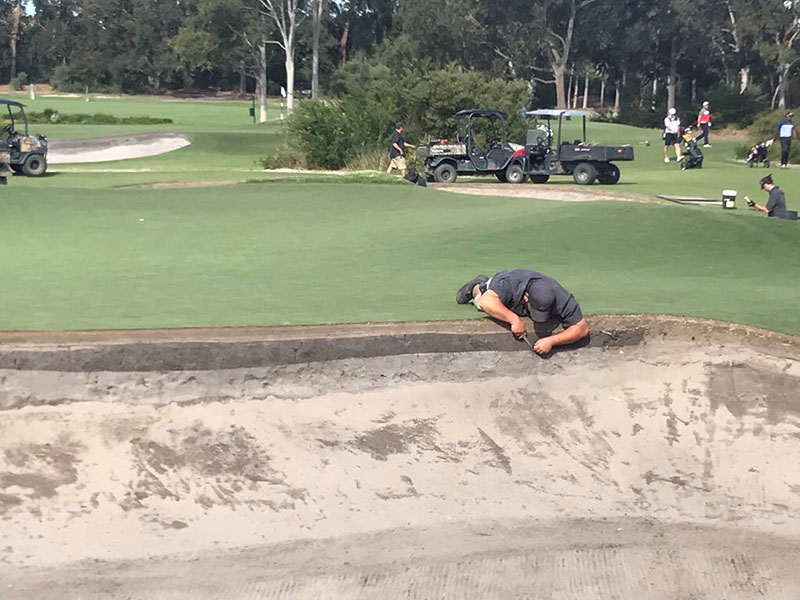The famous courses of the Melbourne Sandbelt, notably Royal Melbourne and Kingston Heath, are distinctive for many reasons, but one of the most important is the characteristic bunker style created by Dr Alister MacKenzie and his collaborators Alex Russell and Mick Morcom.
Sandbelt bunkers are characterised by their size, by their swooping shape, with capes and bays dividing them up into different compartments, by their flashed sand faces, and by the fact that they cut so deeply into fairways and greens – and are typically presented with short grass – fairway or even green cut – right up to the edge of the bunker.
That look has been enormously influential around the world of golf. Gil Hanse’s Olympic course in Rio de Janerio and Tiger Woods’ first American design, Bluejack National in Texas, are only two in a long list of courses said by their designers to be influenced by the Sandbelt look. But replicating those trademark Melburnian bunkers is hard. The soil on the Melbourne courses, though sandy, contains a lot of fine particles and grey organic matter that mean it binds together to create a hard surface. Coarser sand – and even more so, clay soil – does not bind the same way, and creating that hard, vertical lip so characteristic of Melbourne is basically impossible; the soil gets wet and crumbles away.
Sydney-based golf architect Harley Kruse has found a way round this problem. At Killara Golf Club, in the northern suburbs of Sydney, a successful 1800 member club whose golf course was basically untouched since the 1960s, Kruse was hired to do a significant course renovation. After careful planning, the works were agreed: reconstruction of all eighteen green complexes, reversing two holes, rebuilding some fairway bunkers and eliminating one par three while bringing a spare hole into the normal rotation.
“Greens were suffering; the rootzone wasn’t good and they were all poa,” Kruse says. “They were small, and basically flat, with very limited strategic value. We have increased their size, with lots more interest; we’ve also taken out 300 big trees and opened up the vistas.”
Kruse and the club wanted sandbelt-inspired bunkers, but the clay soil at Killara meant that was going to be difficult. However, they found a solution. The new bunkers are lined with Capillary Concrete, and feature a high lip, typically 400mm (16 inches) high, constructed using EcoBunker’s patented synthetic bunker edging system. The sand is then flashed up the EcoBunker wall, and the bunker surrounds can be mowed short right to the edge, because of the strength the EcoBunker and Capillary Concrete underpinnings provide.
“If we had tried to do that edge using the site soils, it would crumble away,” says Kruse. “Getting that stable lip in clay soils is very difficult to achieve. But EcoBunker allows us to do it.”





